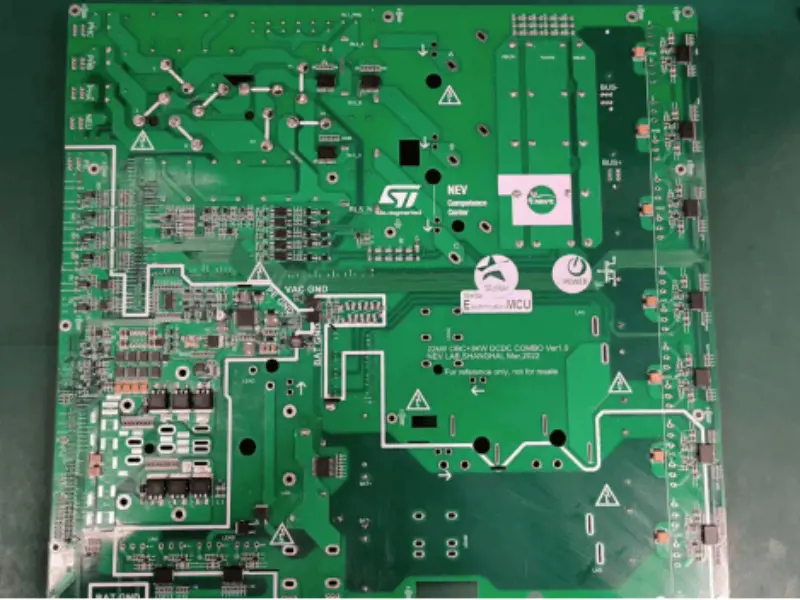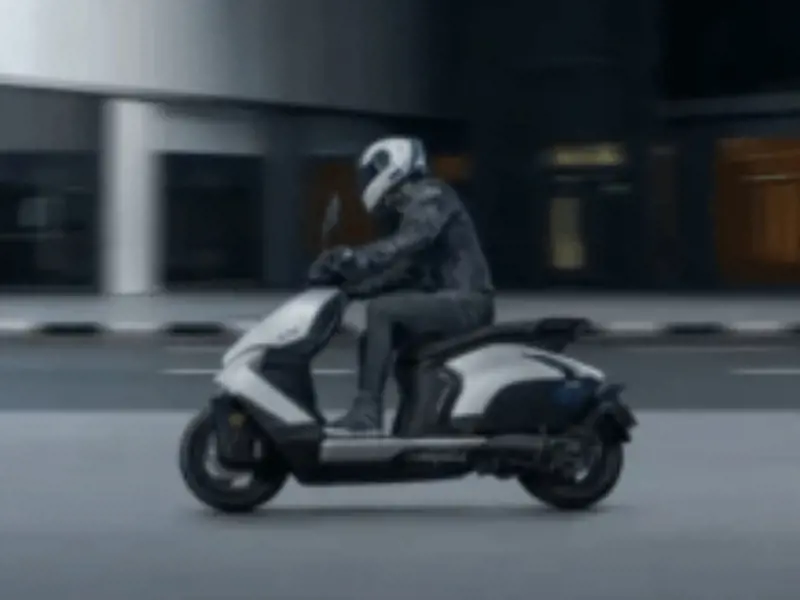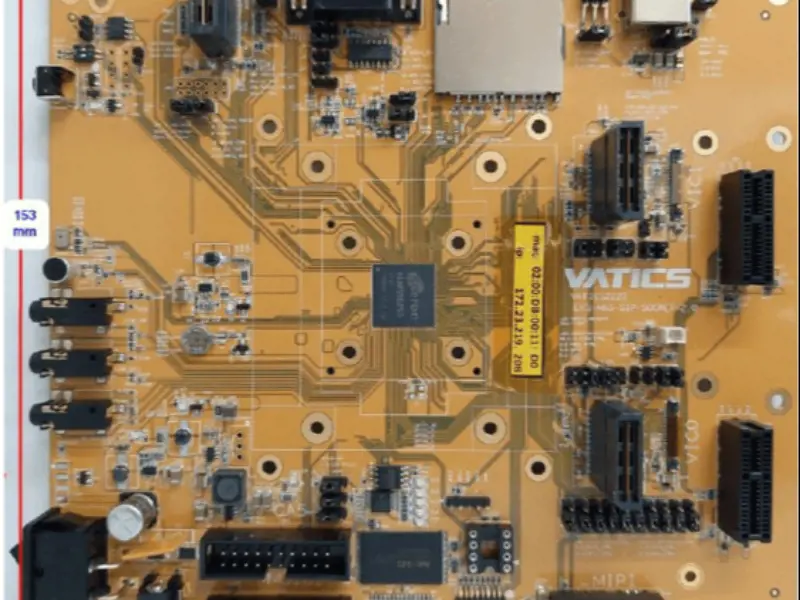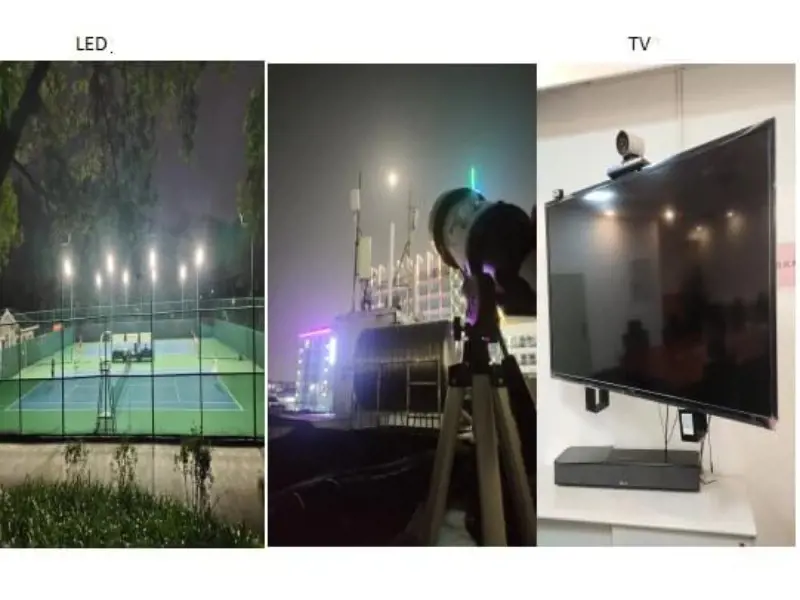NXP i.MXRT1170 Based Automotive Dashboard Solution
Solution Introduction
The program is based on the NXP i.MX RT1170 automotive dashboard program, the program uses open source lightweight display graphics library LVGL, LCD resolution of 720x1280, the program uses a general-purpose graphics acceleration engine, vector graphics processing, multi-layer optimization and other strategies to optimize the display effect to improve the frame rate.
The solution adopts a dual-core strategy, with the high-performance Cortex-M7 core as the master core focusing on image display processing and the energy-efficient Cortex-M4 as the slave core receiving vehicle information such as speed, mileage, and power through the CAN bus, and then transmitting it to the master core through the MU (Messaging Unit) data transfer unit and displaying it on the instrument interface.
Market Analysis
From the first generation of mechanical instrumentation to the second generation of electrical instrumentation, to the third generation of new digital LCD instrumentation, the instrumentation displays richer content, more powerful functions and more intelligent use.
With the rapid development of the new energy vehicle industry in recent years, the penetration rate of digital automotive instrumentation has continued to rise. From January to November 2021, the national automobile production reached 23.172 million units, an increase of 0.5% compared with the same period in 2020, of which the production of new energy vehicles reached 3.023 million units, an increase of 1.7 times year-on-year, and the market penetration rate reached 12.7% (data from National Automobile Industry Association). )
The Program Demonstration Interface Introduction
There are six interfaces in the LCD part of the program: home page interface, navigation interface, instrument interface, tire pressure interface, music interface, and chart interface, which are used to demonstrate the attributes of the program that can be applied to the vehicle dashboard.
3.1 Home page interface:
E-Bike DEMO displays the home page interface after first power on, the home page interface is used as the guide and initial interface, click the icon in the left menu bar, after the blue slider slides to the corresponding icon, the right interface switches to the corresponding interface.
3.2 Navigation interface:
The navigation interface demonstrates that the program can be applied to navigation, the left side of the interface is the car posture demonstration interface, the right side is the navigation demonstration animation, the navigation map moving display, the track will disappear as the pointer passes.
3.3 Instrument interface:
The interface demonstrates that the program can be applied to the instrument panel, the left and right side of the interface is the speed instrument panel and power dial, the middle is the car attitude demonstration interface, after the car initialization the speed and power characters start to cycle according to the preset value or input value to start the demonstration.
3.4 Tire pressure interface:
Tire pressure interface is the demonstration tire pressure data interface, the car attitude part on the right side will show the indication label to show the car tire pressure data.
3.5 Music interface:
The interface (only with display function), music interface for transplantation demonstration DEMO, demonstration of the program can be applied to entertainment audio and video systems, to achieve the right side of the music bar rhythm demonstration music playback animation, to achieve the previous song, the next song, play, pause song and other switching animation.
3.6 Chart interface:
The interface demonstrates the LVGL chart function, click the right drop-down menu can be used to select different chart types to display.
►Scene application diagram
►Showboard photo
►Core Technical Advantages
i.MX RT1170 This breakthrough product series integrates outstanding and excellent computing performance with a variety of media functions, powerful multimedia performance for HMI and provides a variety of graphics acceleration GPU for user development. i.MX RT series of i.MX RT1170 for the first time to increase the ARM Cortex-M7 main frequency to 1 GHz, and the first introduction of the dual-core concept, dual-core The system is equipped with a high-performance core and a power-efficient core, the main technical points used in this program are introduced as follows:
1. Dual-core communication function:
The i.MX RT1170 has a high-performance and energy-efficient dual-core, the chip starts the master APP after power on, and the master APP contains the code to load the slave APP segment to realize the function of the master core activating the slave core. Dual-core communication is a very important part of the dual-core system, i.MX RT1170 dual-core support four types of communication between the sharing of resources, this program uses MU data transfer unit to transfer data.
2. Graphics acceleration function:
Image display before the display, i.MX RT1170 can be accelerated by PXP, LCDIFv2, VGLite and other graphics gas pedals to accelerate, generate or mix graphics content to optimize the display effect.
3. PXP module:
The LCD screen used in this program is 720x1280 vertical screen, the horizontal image generated by LVGL is processed by the rotation engine of PXP to generate new buffered vertical data rotated by 90 degrees, and the rotation process takes about 8ms.
4. LCDIFv2 module:
The solution uses a multi-layer blending overlay strategy to achieve navigation functionality through the LCDIFv2 module, which supports up to 8 layers of blending, each of which can be configured with different color format coding formats, sizes, positions and blending modes.
5. VGLite module:
VGLite lightweight 2D graphics API with small memory footprint and low CPU usage, accelerates user interface drawing to improve refresh rate.
►Specifications
1、 Support AEC-Q100
2、 i.MX RT1170 crossover MCU with 1GHz frequency
3、 Support PXP, LCDIFv2, VGLite image gas pedal
4、 LCDIFv2 up to 8 layer mixing
Previous: NXP MCU FS32K144 based BMS solution
Next: NXP LPC5516-based 8K Report Rate Gaming Keyboard Solution









